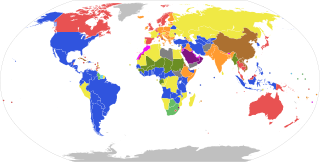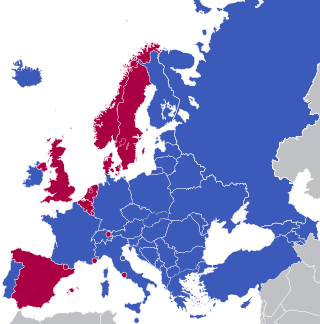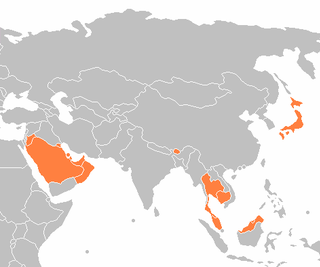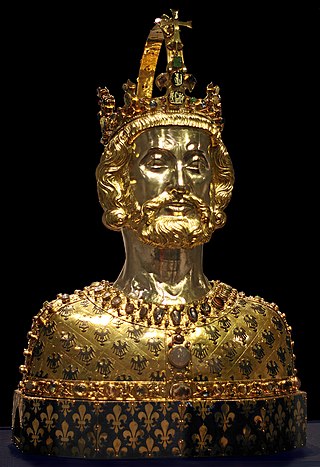
Constitutional monarchy, also known as limited monarchy, parliamentary monarchy or democratic monarchy, is a form of monarchy in which the monarch exercises their authority in accordance with a constitution and is not alone in making decisions. Constitutional monarchies differ from absolute monarchies in that they are bound to exercise powers and authorities within limits prescribed by an established legal framework.

Malaysia is a modern concept, created in the second half of the 20th century. However, contemporary Malaysia regards the entire history of Malaya and Borneo, spanning thousands of years back to prehistoric times, as its history.
A monarch is a head of state for life or until abdication, and therefore the head of state of a monarchy. A monarch may exercise the highest authority and power in the state, or others may wield that power on behalf of the monarch. Usually a monarch either personally inherits the lawful right to exercise the state's sovereign rights or is selected by an established process from a family or cohort eligible to provide the nation's monarch. Alternatively, an individual may proclaim oneself monarch, which may be backed and legitimated through acclamation, right of conquest or a combination of means.
A monarchy is a form of government in which a person, the monarch, is head of state for life or until abdication. The political legitimacy and authority of the monarch may vary from restricted and largely symbolic, to fully autocratic, and can span across executive, legislative, and judicial domains.
A principality can either be a monarchical feudatory or a sovereign state, ruled or reigned over by a regnant-monarch with the title of prince and/or princess, or by a monarch with another title considered to fall under the generic meaning of the term prince.
The abolition of monarchy is a legislative or revolutionary movement to abolish monarchical elements in government, usually hereditary.

A dynasty is a sequence of rulers from the same family, usually in the context of a monarchical system, but sometimes also appearing in republics. A dynasty may also be referred to as a "house", "family" or "clan", among others.

A crown prince or hereditary prince is the heir apparent to the throne in a royal or imperial monarchy. The female form of the title is crown princess, which may refer either to an heiress apparent or, especially in earlier times, to the wife of the person styled crown prince.

In the European history, monarchy was the prevalent form of government throughout the Middle Ages, only occasionally competing with communalism, notably in the case of the maritime republics and the Swiss Confederacy.
A federal monarchy, in the strict sense, is a federation of states with a single monarch as overall head of the federation, but retaining different monarchs, or having a non-monarchical system of government, in the various states joined to the federation.
A composite monarchy is a historical category, introduced by H. G. Koenigsberger in 1975 and popularised by Sir John H. Elliott, that describes early modern states consisting of several countries under one ruler, sometimes designated as a personal union, who governs his territories as if they were separate kingdoms, in accordance with local traditions and legal structures. The composite state became the most common type of state in the late medieval and early modern era in Europe. Koenigsberger divides composite states into two classes: those, like the Spanish Empire, that consisted of countries separated by either other states or by the sea, and those, like Poland–Lithuania, that were contiguous.

There are several monarchies in Asia, while some states function as absolute monarchies where the king has complete authority over the state, others are constitutional monarchies where a monarch exercises authority in accordance with a constitution and is not alone in decision making.
A non-sovereign monarchy, subnational monarchy or constituent monarchy is one in which the head of the monarchical polity, and the polity itself, are subject to a temporal authority higher than their own. The constituent states of the German Empire or the princely states of the Indian Empire during British rule provide historical examples; while the Zulu king, whose power derives from the Constitution of South Africa, is a contemporary one.

King is the title given to a male monarch in a variety of contexts. A king is an absolute monarch if he holds the powers of government without control, or the entire sovereignty over a nation; he is a limited monarch if his power is restrained by fixed laws; and he is an absolute, when he holds the whole legislative, judicial, and executive power, or when the legislative or judicial powers, or both, are vested in other people by the king. Kings are hereditary sovereigns when they hold the powers of government by right of birth or inheritance, and elective when raised to the throne by choice.







